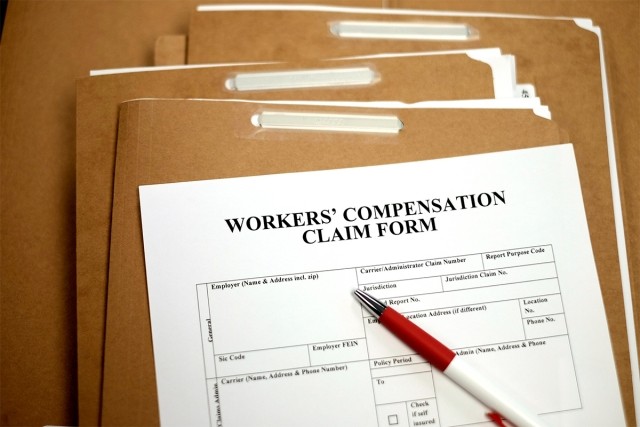Blog
2021 OSHA Update: The Undeniable Impact of COVID-19
In last year’s Cal/OSHA update from our Construction Practice, COVID-19 was emerging as a health and safety concern and compliance hurdle for employers nationwide. Our 2021 update illustrates just how significant of an impact COVID has had and will continue to have on OSHA regulations and their enforcement at state and federal levels. Much is in flux, but we hope that the information and resources herein will help you to navigate this complex compliance challenge.

Cal/OSHA versus Federal OSHA
It is sometimes difficult to understand the connection between California OSHA and Federal OSHA and how the two entities affect each other, however, in 2021, with ever-evolving COVID regulations and the new administration in place, there is more of an incentive to do so. While California operates its own state program, the federal program sets minimums that often push state plans to make changes. In 2021 and beyond, it will be important to monitor OSHA policy updates at the national level to better anticipate changes Cal/OSHA will make to meet federal minimums.
An example of this already in progress is the proposed change to hazard communication regulations. Although still in the comment period, it is anticipated that these revisions will go through, and some will require Cal/OSHA to adapt accordingly. Another area to keep an eye on is recordkeeping. So far, there has not been an executive order reinstating the collection of 300 log and 301 form information in the ITA system, but, given the original intent of that system under previous administrations, that may come up, possibly post-pandemic.
The COVID-19 Emergency Temporary Standard and AB 685
Most construction employers have attended webinars, assigned resources, and have been ahead of most other industries in complying with and understanding the many COVID-related regulations issued by Cal/OSHA, the state, and local county authorities. The standards that continue to dominate our day-to-day interaction with COVID include the Emergency Temporary Standard (ETS) and AB 685 requirements. Some of the more nuanced areas of these regulations are exclusion pay, quarantine, return-to-work guidance, and what constitutes an exposed workplace (this determines how many employees must be tested, quarantined, and provided with exclusion pay). While a full discussion of these topics is beyond the scope of this article, you may always call your Woodruff Sawyer account team for assistance, or check out our Coronavirus Resource page for more information.
Legal Action around the ETS: It is important to note legal action is underway to stop some of the provisions of the ETS. You may wish to contact your industry association and/or legal counsel to monitor the outcome of that action.
Fleet Controls
Due to ongoing auto losses fleet exposures are a big item on underwriters’ checklists in 2021, just as they were in 2020. Many companies have already worked on, or at least considered, telematics programs or updated their fleet control safety programs to help mitigate loss and, frankly, to secure coverage and keep premiums as low as possible. If this action item is on your backburner, you may wish to move it forward. Premium increases and refusals to offer coverage are both occurring in this market. If you need help evaluating your program, or simply want to run through a checklist of what underwriters are looking for, contact your Woodruff Sawyer account team.
COVID-19, Wildfires, Air Quality, and Heat
While employers have become accustomed to wildfire and air quality regulations, as well as heat exhaustion prevention, there could be a twist in both scenarios this year. Assuming COVID-19 is still with us when temperatures start to rise, you may have to deal with mask-wearing and heat issues, air quality, and transportation conflicts not previously encountered, or at least not since last summer. Per the new ETS (3205.4) for COVID-19, windows in vehicles must be left down until the air quality index (AQI) reaches 100, the outside temperature hits 90 degrees Fahrenheit, or protection from weather events is needed. In the case of heat, the air conditioning must be functioning and in use; in the case of poor AQI, the air conditioning and cabin filter must be functional as well. Factoring COVID-19 distancing requirements into employee-provided transportation per 3205.4 could make transportation a significant challenge in 2021.
It is also important to remember that wearing a mask does affect the body’s ability to deal with heat and may complicate, to some degree, the seasonal heat acclimatization effort. We recommend that you familiarize yourself with this regulation heading into the warmer months with mask requirements still in effect.
OSHA Recordkeeping
Recordkeeping related to OSHA logs and 300A forms is largely the same as last year, with the exception of a few special considerations for COVID cases that are work-related. Remember that if a case is not work-related, it never goes on the log. The recordkeeping resource page outlines the decision-making process to determine whether a case (even if positive) should go on the log or not. Accuracy in recordkeeping can be critical to preventing an OSHA visit or answering questions about your safety record for contracting entities.
Most Cited OSHA Standards
Typically, the list of most frequently cited standards for construction varies only slightly year over year, but unsurprisingly, 2021 is proving different, and the normal sources for most frequently cited standards are behind the curve. We have provided the standards to delineate what Federal OSHA has been citing in 2020, because it is a bit more descriptive than the citations issued by Cal/OSHA under Title 8, Section 3203 related to Injury and Illness Prevention Plans (IIPPs). The highest categories include a grouping of respiratory protection line items, PPE requirements, and general duty clause citations. Of course, the new citation landscape is different and continues to evolve. Beginning November 30, 2020, Cal/OSHA was able to start citing under ETS, or Title 8, Sections 3205 – 3205.4, and after February 1, 2021, Cal/OSHA began to attach dollars to citations based on that same standard. This is the standard that requires a written COVID-19 prevention plan and quite a few other elements for compliance. As mentioned, Federal OSHA will likely have an emergency standard out by mid-March and will be reviewing state standards, including California’s. This is definitely something to keep an eye on.
In the meantime, the Cal/OSHA Guidance for Construction Employers from 2020 may actually be more relevant now given the attention being paid to COVID and the continual need to consider and monitor other exposures on our worksites.
Safety Training and Resources
Did you know Woodruff Sawyer offers clients an exclusive Safety Toolbox and access to ClickSafety through our online resources? In addition, exclusively for Woodruff Sawyer clients, we provide a service called Succeed, our Risk Management Center platform which includes safety management resources, training, and tracking aides. For more information on Succeed, contact your Woodruff Sawyer Account Executive.
Our value-added safety services contain valuable resource material for management, field supervisors, and field staff. From tailgate meeting sheets in both English and Spanish to model safety programs, resources, and links to other resources, you’ll find information to support your company’s safety efforts.
In this unprecedented moment for worksite health and safety, we are here to help. For further information on any of the topics addressed in this article, please contact Woodruff Sawyer’s Construction & Real Estate Practice at 415.391.2141.
Authors
Table of Contents
















